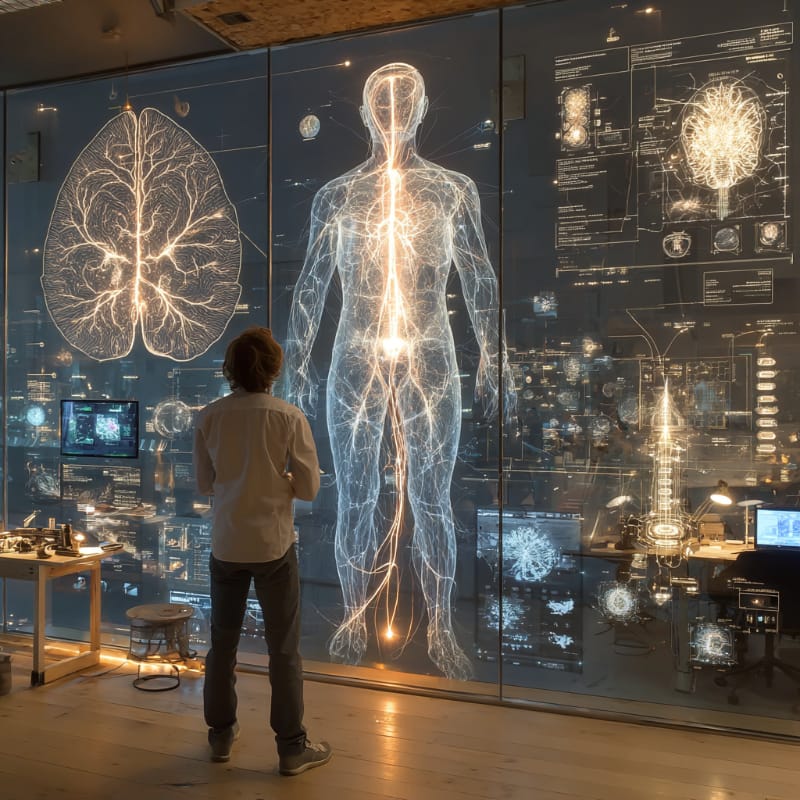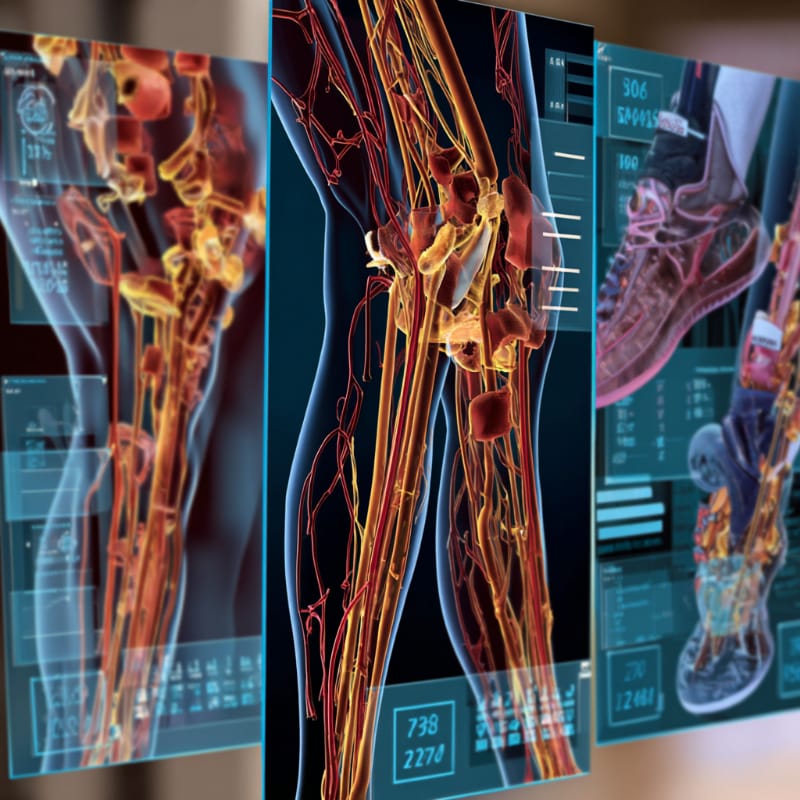- Cidpedia
- Posts
- Cidpedia Newsletter
Cidpedia Newsletter
ISSUE #19 AUGUST 5 2025
🌟 Central Texas Resource
ALWAYS FRESH - Start your week empowered - CIDP updates, resources, and encouragement await!
Trusted Information and Community for Patients, Caregivers, and Professionals
www.cidpedia.net

Table of Contents
Editor's Perspective: When Dawn Becomes a Battlefield
Breaking Treatment News: Four Game-Changing Updates
Feature Article: CIDP and PTSD - When Your Body Becomes the Battlefield
Innovation Spotlight: NVG-2089 Shows Promise
Community Corner: Morning Ritual Success Stories
Clinical Trial Updates: What's Recruiting Now
Resource Hub: Mental Health Support


1. Editor's Perspective: When Dawn Becomes a Battlefield
Every morning at 6 AM, that alarm doesn't just wake me up—it calls me to battle. Not against an external enemy, but against my own body, my own mind, and the psychological weight of facing another day with CIDP.
For many in our community, mornings aren't just about getting up. They're about confronting the intersection of physical symptoms and psychological trauma that chronic illness creates. The PTSD-like responses many of us experience aren't weakness—they're normal reactions to abnormal circumstances.
Today, we explore this rarely discussed reality while celebrating the latest breakthroughs that give us hope for better tomorrows.

2. Breaking Treatment News: Four Game-Changing Updates
🚀 NVG-2089 Phase 2 Trial Launches
First patient dosed - breakthrough IVIg alternative shows promise
Jump to: Nuvig Therapeutics INVGOR Trial
🏠 FDA Clears HyHub Devices for Home Use
Needle-free HyQvia preparation now available at no extra cost
Jump to: FDA 510(k) Clearance Details
🇨🇦 Canada Expands HyQvia Access for CIDP
Monthly subcutaneous therapy now available nationwide
Jump to: Health Canada Authorization
📊 Real-World Data Validates Current Treatments
Large study confirms immunoglobulin therapy reduces disability progression
Jump to: NeurologyLive Study Results

3. Feature Article: CIDP and PTSD - When Your Body Becomes the Battlefield
The Hidden Wound: Understanding Medical PTSD in CIDP
The morning alarm doesn't just wake you—it triggers an involuntary assessment: Can I feel my feet? Are my hands working? What kind of day is this going to be? For many CIDP patients, this daily reality check resembles the hypervigilance seen in post-traumatic stress disorder.
Medical PTSD in chronic illness isn't officially recognized in diagnostic manuals, but research shows that 20-40% of people with chronic conditions develop trauma-like symptoms. When your own body repeatedly betrays you—losing function, causing pain, defying treatment—your nervous system stays perpetually alert for the next attack.
The Morning Battle: When Dawn Triggers Trauma
CIDP mornings are particularly challenging because they force confrontation with our "new normal." That first conscious moment brings the weight of another day managing unpredictable symptoms, complex treatments, and uncertain outcomes. The psychological impact compounds the physical challenges.
Research from the National Comorbidity Survey shows that people with chronic pain conditions—including neuropathies like CIDP—have significantly higher rates of anxiety disorders and depression. The constant threat assessment our minds perform creates a state of chronic stress that affects both mental and physical health.
Recognizing the Signs
Medical trauma in CIDP patients often manifests as:
Hypervigilance about symptoms and body changes
Anxiety around medical appointments or treatment days
Avoidance of activities that might worsen symptoms
Intrusive thoughts about disease progression
Sleep disturbances related to pain or worry
Emotional numbing or detachment from daily life
Breaking the Cycle: Practical Strategies
Morning Mindfulness: Before getting out of bed, practice a gentle body scan—not to judge symptoms, but to gather information with compassion. Acknowledge what you're feeling without catastrophizing about the day ahead.
Grounding Techniques: When anxiety peaks, use the 5-4-3-2-1 method: identify 5 things you can see, 4 you can touch, 3 you can hear, 2 you can smell, and 1 you can taste. This pulls you back to the present moment.
Trauma-Informed Care: Seek mental health professionals who understand chronic illness. Cognitive-behavioral therapy and EMDR have shown success in treating medical trauma.
Community Connection: The isolation of chronic illness amplifies trauma responses. Connecting with others who understand your experience—like our CIDPedia community—provides validation and reduces the sense of being alone in your struggle.
The Path Forward
Acknowledging the psychological impact of CIDP isn't admitting weakness—it's recognizing the full scope of what we're fighting. Every morning we face is evidence of our incredible resilience. By addressing both the physical and emotional aspects of our condition, we can reclaim not just our mobility, but our sense of hope and agency in our own lives.

4. Innovation Spotlight: NVG-2089 Shows Promise
The global Phase 2 INVGOR trial has begun dosing patients with NVG-2089, a recombinant protein designed to replicate IVIg's benefits with improved consistency and convenience. Phase 1 data showed excellent safety with no serious adverse events, supporting advancement to efficacy testing in 60 CIDP patients across 40 international sites.
What makes this exciting: NVG-2089 could address IVIg supply shortages while offering more predictable dosing and potentially fewer side effects than plasma-derived products.

5. Community Corner: Morning Ritual Success Stories
"I keep a 'victory journal' by my bed. Every morning, I write down one thing I'm grateful for and one small goal for the day. Some days it's just 'make coffee' but acknowledging these wins helps me start positively." - Maria, CIDP patient since 2019
"My heating pad and gentle stretches before I even sit up have become sacred time. It's not about fixing everything—it's about honoring where my body is today." - James, Houston

6. Clinical Trial Updates: What's Recruiting Now
MOBILIZE & VITALIZE (Riliprubart): Phase 3 trials recruiting across 28 countries
www.sanofistudies.com/clinicaltrial/312953/chronic-inflammatory-demyelinating-polyneuropathy/
INVGOR (NVG-2089): Global Phase 2 study now enrolling
Contact: Your local GBS|CIDP Foundation chapter
CAPTIVATE (DNTH103): Patient-friendly design with no placebo phase
Contact: GBS|CIDP Foundation

7. Resource Hub: Mental Health Support
Trauma-Informed Therapists: Psychology Today's chronic illness specialist directory
Support Groups: National Alliance on Mental Illness (NAMI)
Crisis Support: 988 Suicide & Crisis Lifeline
CIDP-Specific: GBS|CIDP Foundation virtual support meetings
Quick & Easy Guides for the CIDP Community
3 Quick Morning Stretches to Reduce Nerve Pain: Gentle ankle circles, knee hugs, and wrist rolls before getting out of bed.
Top 5 Tips for Managing Fatigue on Tough Days: Pace activities, rest before tired, hydrate, small protein snacks, and use a symptom diary.
How to Pace Yourself: Energy Conservation Basics: Break big tasks into steps, use tools to reduce effort, and plan breaks often.
Simple Hand Exercises to Improve Grip Strength: Squeeze a soft ball, finger taps on a table, or gentle hand stretches.
Easy Ways to Boost Your Mood During Flare-Ups: Listen to upbeat music, call a friend, enjoy sunlight, write a positive note, or hug a pet.
What to Pack for Medical Appointments: Medication list, notes/diary, ID, pen/paper, snack, water, and your questions.
How to Make Pill Taking Easier: Tips and Tricks: Use a pill organizer, set phone reminders, or ask for easy-open bottles.
Signs You Should Contact Your Doctor: Sudden new weakness, changes in walking, trouble breathing or swallowing, or severe pain.
Quick Mindfulness Exercise to Reduce Stress: Breathe slowly—inhale for four, hold for four, exhale for four, repeat.
Basic Guide to Talking With Your Neurologist: Be honest, bring written questions, describe changes, and ask about new treatments.
Tips for Safe Fall Prevention Around the House: Remove loose rugs, use nightlights, grab bars in the bathroom, shoes with grip.
Setting Up a Pain Journal: What to Track: Note pain location, level (1-10), activities, weather, and what helped.
Simple Diet Tips to Support Nerve Health: Stay hydrated, choose lean protein, eat colorful fruits/veggies, healthy fats, limit processed foods.
How to Use Heat and Cold Therapies Safely: Warm packs for stiffness, cold packs for swelling, always wrap in a towel, 10-15 minutes at a time.
When to Ask for Help: A Quick Family Guide: Don’t wait; ask early—mobility, meals, chores, or talking about feelings.
https://www.cidpedia.net/p/cidpedia-special-issue-bc9a90e25e6961f9
https://www.cidpedia.net/p/cidpedia-newsletter-lucky-7-8ba5517d5b2ce9bf
https://www.cidpedia.net/p/cidpedia-newsletter-issue-5-d9a4da8285c8824b
https://www.cidpedia.net/p/cidpedia-newsletter-1133192235a2bd3b
https://my.clevelandclinic.org/health/diseases/24881-cptsd-complex-ptsd
https://www.shiningthroughcidp.com/everyday-life-with-cidp/stress-management-tips
9. Disclaimer
Disclaimer: Richard and Margaret |
Fight fierce, fight hard, fight smart.

Reply